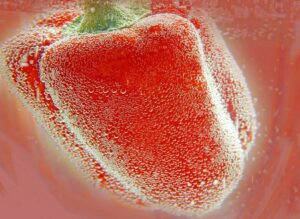Fernando Díaz
Essentials oils are volatile aromatic compounds with an oily appearance extracted from plant materials typically by steam distillation. Traditionally, they have been used in dairy diets to modify ruminal microflora and alter rumen fermentation. Recent research; however, shows the implication of some essential oils on physiologic functions in the cows (immunity, oxidative stress, mineral transport, insulin regulation…) by activating transient receptor potential (TRP) channels. These are non-selective ion channels expressed on neurons, the intestines, the pancreas, immune cells, and other tissues, that integrate environmental physicochemical signals for homeostatic control.
Additionally, studies of ruminal epithelia in vitro reported recently that essentials oils enhance the transport of Ca2+ and other cations (Na+, NH4+) across the epithelium. In order to further investigate this observation, German researchers evaluated the effects of feeding a commercial blend of essential oils on calcium status and milk yield in lactating dairy cows.
Mid-lactation cows (72) from the Agricultural Teaching and Testing Institute of the State of Schleswig Holstein, Futterkamp, Germany, were divided in two groups and fed a TMR based on corn-grass silage with or without essential oils. The essential oil blend contained menthol as the major active compound (>80%) in combination with eugenol and anethol, and was fed daily at 1.2 g/cow.
The findings, reported in Animal, showed that supplemental essential oils improved production performance. Cows receiving essential oils produced more energy-corrected-milk (34.6 vs. 33.0 kg/day), milk fat (1.23 – 1.15 kg/day), and milk protein (1.11 vs 1.06 kg/day) and milk with greater fat content (3.79 vs. 3.25%) than unsupplemented cows. Since dry matter intake was similar in both groups (19.6 kg/day), cows fed the essential oil diet were significantly more efficient (1.76 vs. 1.65 milk/intake). In addition, milk urea nitrogen was lower in supplemented cows (166 – 182 mg/dL).
Cows fed the additive showed higher plasma calcium levels (2.53 mmol/l) compared with cows fed the basal diet (2.46 mmol/l). The authors (Braun et al., 2019) suggested the essential oil blend fed in this study may have stimulated the transport of calcium from rumen into blood, which might explain the increase of plasma calcium. No differences between diets were observed in serum levels of magnesium and phosphorus (0.99 and 1.90 mmol/l, respectively).
In conclusion, results from this study show that essential oils have the potential to improve milk production, feed efficiency and calcium absorption in dairy cows. Further research is needed to clarify the involvement of essential oils in calcium homeostasis.
Reference
H. S. Braun, K. T. Schrapers, K. Mahlkow-Nerge, F. Stumpff, and J. Rosendahl. 2019. Dietary supplementation of essential oils in dairy cows: evidence for stimulatory effects on nutrient absorption. Animal, 13: 518–523.











